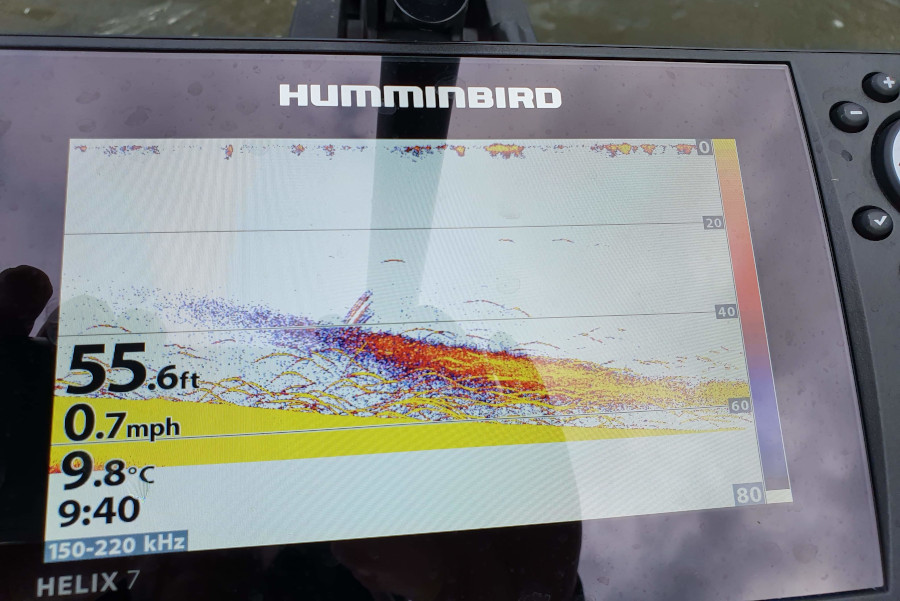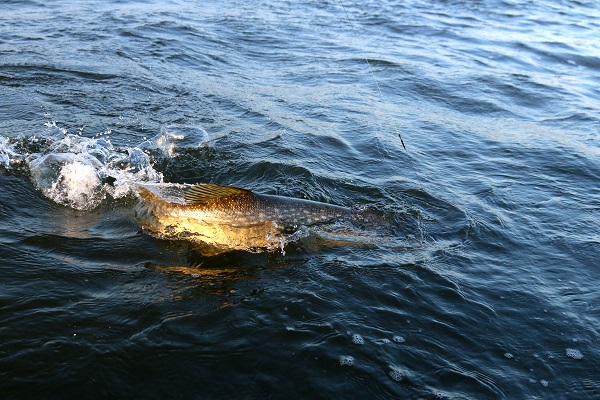Nothing beats that almighty wall of resistance that you encounter when an actively hunting pike hits your lure! Tail walking, strong lunges and those ominous head shakes that resonate down your line as it tries to throw the hooks!

Pike have been my chosen quarry of choice for a number of years now. From quite a young age, 16 to be exact, I was drawn to the species, I was in awe of their prehistoric looks and curious about their underwater behaviour.
Solely a die-hard dead baiting fanatic, the last 3 to 4 years have seen me really focus my efforts on lure fishing for these remarkable creatures. I have been lucky enough to have been in the company of some of the most knowledgeable lure anglers in the UK. I have learned a lot from my peers, as well as observe and learn through my own experiences.
Before taking up lure fishing, I was somewhat naive to the actual discipline. Lure fishing is an art form; it’s not just a case of casting a lure out and retrieving it. There is so much more to it! Lure colour choice, lure action, presenting the lure at the right depth, the retrieve, the location, the features, covering water etc. It’s a minefield of variables to consider! That’s what makes it so fun and so addictive.
So how do you catch pike on lures? In this article, I will be giving you an insight into how to do just that. The following information is information that I have gained from other knowledgeable lure anglers on my journey and from my very own personal experiences.
Location
So let’s look at the most important factor when it comes to catching pike on lures, location! We can thrash the water with the best lure patterns in the world but if we haven’t located likely pike holding areas our catch rate will be relatively low.
‘Location is key’ You’ve probably heard this saying a million times before. So what are we actually looking for when we are out on the water? We are looking for underwater features. These structured areas are like motorways for fish and they allow fish to move from area to area. They provide great ambush points, which is why fish are primarily located in these areas.
So what features should you be looking for? The majority of my fishing is done from a boat. So I will be scanning for features such as:
Drop-offs
Like the name suggests, is when the loch/lake bottom gradient drops off to a deeper area of the loch/lake. Drop-offs come in various forms from steep to shallow gradients. They provide great ambush points. The pike’s eyes sit near the top of their head, so sitting near the bottom of a drop-off allows them to target prey moving above them.
Weed lines
These provide a great ambush point and provide a very stealthy patrol route. Pike will sit tight to the edge of weed lines awaiting passing prey. Depending on the style of weed, they will even sit amongst it.
Rocky structure
Rocky structure not only provides great ambush points as the rocky structure is a magnet for prey fish, as it provides sanctuary, it also provides shelter from rough weather conditions.
Islands
Islands offer the same benefit as the bankside. There is a margin for fish to patrol around. Like rocky structure, some pike use islands to get out the way of extreme or adverse weather conditions. Islands provide multiple points of ambush and are a key feature on any water.
Plateaus
Another extremely great area to target. A plateau provides an amazing 360-degree drop-off. The drop off around a plateau can provide various gradients too. Pike to come up onto the shallower part of the plateau to bask in the warmer water. Pike can ambush from any point around a plateau.
Bottom Transition
I look for areas where a soft bottom transitions to a hard bottom. Pike seem to like these transitions. I don’t fully know why, maybe the change in soil composition creates a break that holds some sort of aquatic life that encourages prey fish to these specific areas or that the softer bottom contains nutrients to encourage weed growth.
To find these areas I look for soft and hard returns on my Humminbird fishfinder. This can be differentiated on the colour return on your screen – please note – these will differ depending on the colour palette you choose to use on your 2D sonar.
Find the prey fish! It is as simple as that, if you can locate a shoal of prey fish, pike won’t be far behind. From experience, hitting the edges of these shoals are usually the key areas. Bear in mind, shoal fish will move, so remember to keep tracking them on your fishfinder.
Top tip: When fishing any sort of structure. Try and attack it from many different angles. Sometimes hitting an area from a different angle may just present your lure directly on the nose of a lethargic fish.
Technology
So once I’ve located a new feature on a new body of water, I will start mapping it on my finder. With modern fish finders coming equipped with live mapping features they allow you to build a quick understanding of the structure below you which in turn allows you to fish more efficiently and more importantly, more accurately. After mapping the structure, I start placing waypoints over the key areas, for example on the beginning of a feature and at the bottom of the feature. At a glance, the waypoints allow me to quickly digest the information I see on my finders screen.
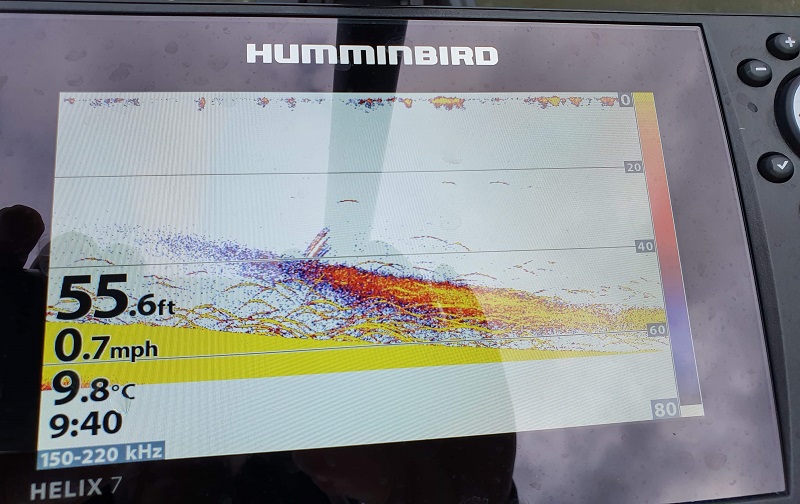
Using a Humminbird Helix 7 G3N, I can activate the drift mode feature; this allows me to create a radial perimeter around the feature I’m covering. Once I drift into this perimeter the finder sounds an audible alarm and once I leave that feature another alarm will sound when I drift out of it. This ensures I can drift and fish the feature efficiently.
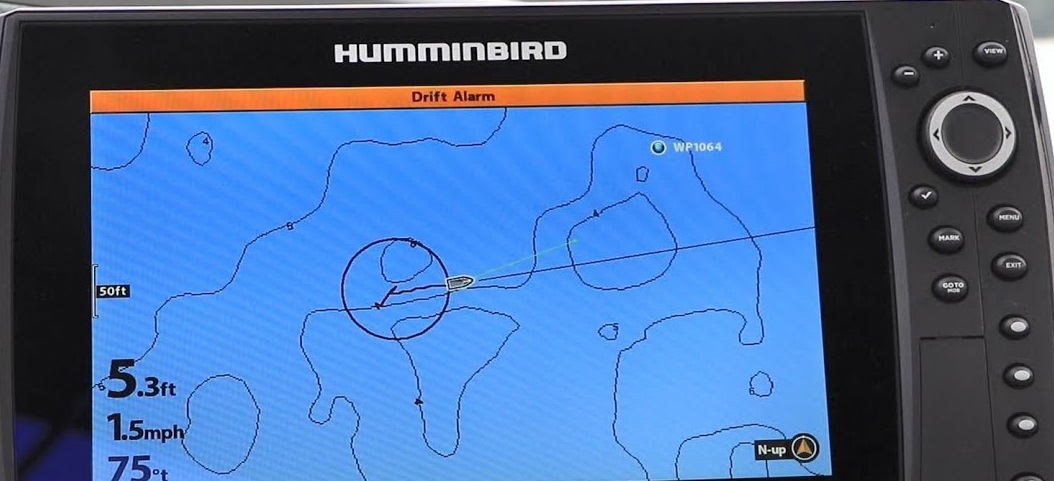
Once set, the only real stumbling block I will likely encounter is the wind direction. This will inevitably dictate if I can fish an area efficiently. If the wind direction and wind speed are not in my favour, then I will anchor up and cover an area for a period of time. When the wind is in my favour, I can cover more water effectively and even hit the structure from various angles.
Change, change, change!
Unlike some lure anglers, I change lures regularly. It’s a habit I picked up from a very good lure angling friend of mine. When you’re drifting an area, you may have fish follow the lure early on in the retrieve and turn away before you even bring the lure back to the boat. If you think about it, if you’re drifting the same drift four or five times using the same lure, you’re decreasing your chances on each drift. You might encourage a fish to look at the lure but that specific lure might not have the action, colour or profile to trigger the take.

Changing my lures frequently allows me to try new lure colours, actions and body profiles. Not only does it present something new in the water but it eliminates the monotonous of working the same lure time and time again over the same body of water. It keeps me mentally focused as well as keeps me thinking!
Strike Everything!
Sounds silly right? Striking at everything that creates any sort of instant resistance on a lure. However, I would hate to count how many fish I missed early on in my lure fishing career by not doing exactly that. If you’ve watched any modern Waterwolf footage of a lure being inhaled by a pike, they have this uncanny ability to eject a lure just as quick as they hit it. Frightening!
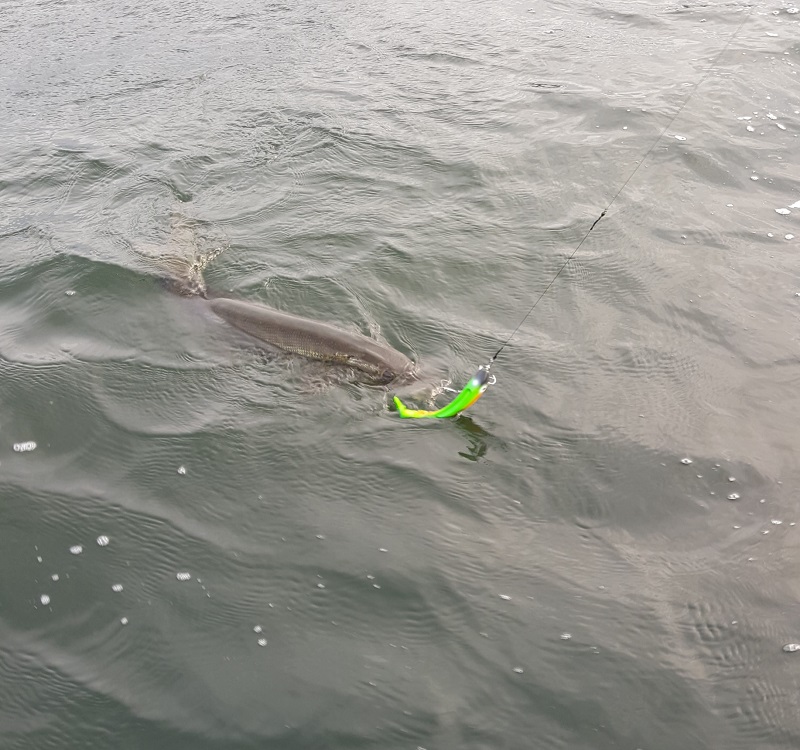
Retrieves
As I stated earlier, there is so much more to a retrieve than just casting a lure out and retrieving it. Sure, you’ll catch fish but you will also miss out on a lot of opportunities too. It’s like cracking a code, some days they will want a lure presented to them quickly and some days they will want it slow or on the pause. It is vital to mix the retrieve up.
Pike can become bored pretty quickly when a lure is tracking back at the same consistent speed, to entice the take we need to trigger them and by changing the retrieve speed we can do just that.
Converting Follows
Pain in the tail!
Following on from our discussion on retrieves, there will be times within your lure fishing career that you will inevitably experience the tail nippers! This is when pike are active but not fully committing to hammering your lure. Frustrating? Absolutely!

By extending the back treble back using split rings and swivels. You increase your chances of hooking up those finicky tail nippers.
In these circumstances, it can be hard to convert this sort of behaviour into a take, but to increase your chances of a hook up we can modify the hook arrangement on certain lures. By setting the rear hook closer to the tail of the lure. If this still does not improve hookups, soon as you feel that tail nip, speed up the retrieve with a short blast and then pause.
If a hook rearrangement still does not produce the goods – downsize! By presenting a smaller offering may help reduce your chances of hooking up!
There she goes…
Another form of follow that you will no doubt encounter is the heart-stopping ‘follow to the boat’. There is something magical about watching a big fish follow your lure elegantly to the side of the boat to turn away at the last minute. In that moment, you are in awe of the curious specimen that your brain stops working momentarily and then after she turns away at the last minute, the thoughts of ‘what-ifs’ come rolling in -as we frantically cast again to try and cover the fish one more time.
In these scenarios, there are two tactics I like to implement – when I don’t get caught up in the moment that is.
The first one incorporates stopping the lure and letting it drop to the bottom. Usually, a percentage of fish will convert with this technique. It’s a technique I started implementing after reading an article by a reputable predator fly angler, he described how he would just stop the fly when he had a following fish that would not convert into a take, during these moments, he would stop the retrieve and let the fly sink to the depths. After reading that, I started to implement this into my own fishing and found on occasion to be a highly successful method.
The second method is covering the fish with a different lure. It amazes me how many times a pike will have a go as soon as we change our lure. It’s like we warm them up with the initial follow and then it ignites that killer instinct of theirs. Don’t get me wrong, you will inevitably have fish follow lures and just not be interested in actually taking.
If I come across following fish in a swim, I will cover that area for a good couple of hours trying different tactics to try and entice a take. If they’re not switched on though, I will then rest that area and try it again later on in my session. If I move a big fish in a specific area but she doesn’t commit, I will waypoint that area too. Usually, it’s a waiting game; we just have to wait until they switch on to that ‘feeding mode’.

Safety
This is a very important factor, for both you and the fish. We are fishing with large treble hooks, from 1/0 to 3/0 on average. The last thing you want is a trip to A&E so take your time when handling and unhooking fish. Work methodically!
From personal experience, I will not net a fish unless I think it’s close to the magical 20lb mark or it has inhaled a lure. The majority of the time I will unhook the fish in the water, if need be, I will rest the fish in the net after unhooking to allow it time to recover if the fight was hard.
Netting fish with lures with flying trebles can be a disastrous experience, soon as a pike feels something alien against their flank, they will kick-off! The dreaded death roll, even in a rubberised mesh net can cause damage. If you are met with this predicament, don’t hesitate to cut the hooks. I recommend a pair of knipex bolt cutters or similar, they are industrial but there is no effort required to cut through big hooks like #3/0 or #4/0.
Unhooking mat
A common sight amongst predator anglers and quite right too, an unhooking mat is recommended if you’re on the boat or bank. They provide a certain element of protection for the fish and are ideal if you require having the fish out the water for any duration of time. i.e: awkwardly hooked fish.
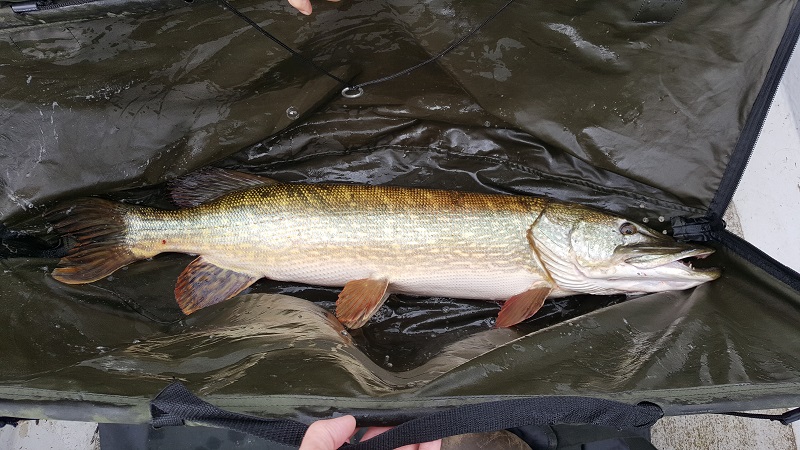
Rubberised mesh landing net
As I stated earlier, a must-have in the armoury. The rubberised mesh provides optimal fish safety with minimal tangling, minimal damage to fish fins and scales. Other benefits include; they dry quicker than traditional nylon-based nets and they don’t smell after use.
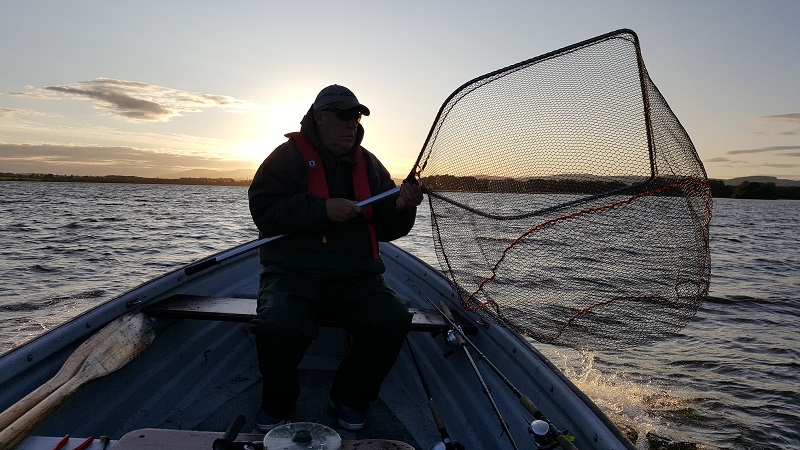
Longnose pliers
A pair of longnose pliers are essential, they are tough and strong enough to provide leverage to remove larger hooks. I personally prefer the pistol grip pliers. I find them less awkward to use than the straight handled models and they provide me with a better grip and provide better purchase.
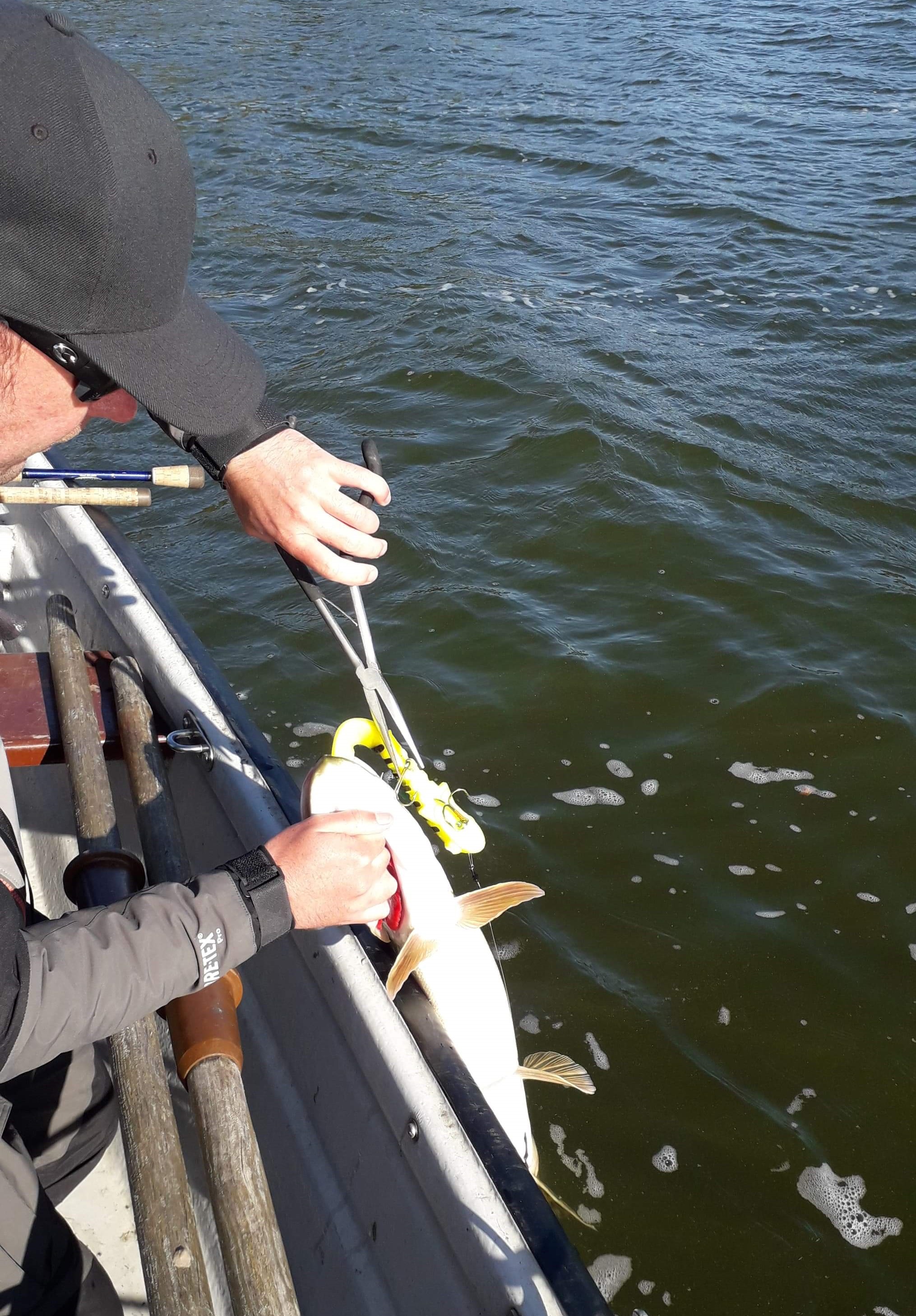
Hopefully, after reading this article, you can take something away from this to adapt or even think of incorporating into your own lure fishing.

